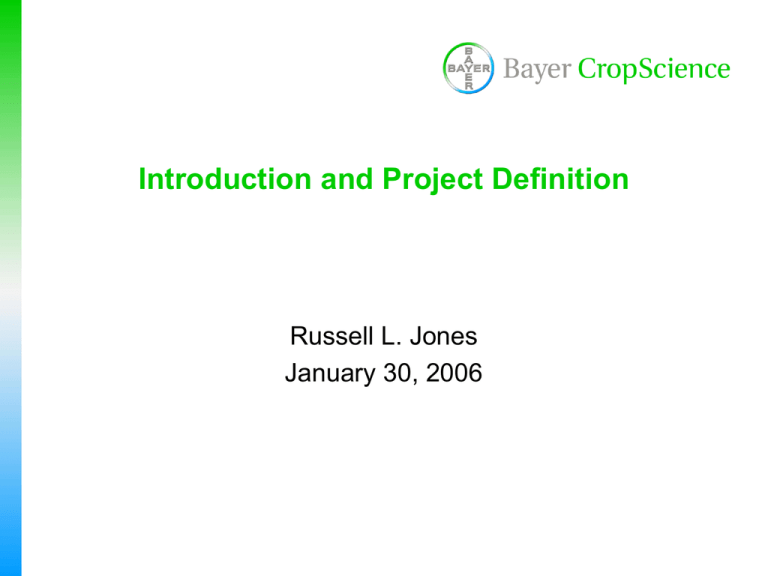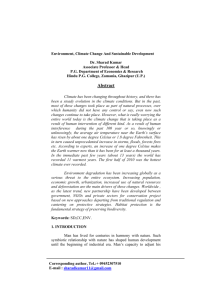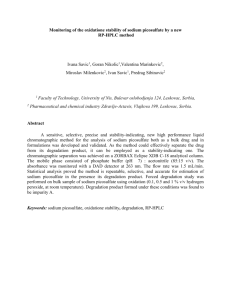Introduction and Project Definition
advertisement

Introduction and Project Definition Russell L. Jones January 30, 2006 Introduction FOCUS has spent a great deal of effort developing and standardizing procedures for assessing concentrations in surface and ground water. One goal of this effort has been to remove the influence of the modeler so that similar results are obtained by anyone following the procedures. Some of the most important input variables in these assessment procedures are the degradation rates of parent and metabolites. January 30, 2006 2 Current Status Study procedures are specified in guidelines but calculation of degradation rates are not standardized. Calculation of first-order kinetics for parent compounds is relatively straightforward. However, assumptions about transformation of data, treatment of values below the LOQ, etc. can affect the resulting degradation rate. January 30, 2006 3 Current Status Less straightforward (especially from a regulatory perspective): Procedures when degradation kinetics are not first- order. Obtaining degradation rates for metabolites. Obtaining degradation rates from water-sediment studies How information from field studies should be used. January 30, 2006 4 Current Status Most registration authorities re-calculate degradation rates from studies. Requires additional time for dossier review Different rates can be obtained when different assumptions/procedures are used Such re-calculations can negate increasingly complex risk assessments. January 30, 2006 5 Current Status Commonly used software packages can give different results. Some organizations have issued guidelines but a more comprehensive document is needed. the EU in the soil persistence paper the U.S. EPA (draft) a joint working group of the IVA, BVL, and UBA for calculating degradation rates of metabolites January 30, 2006 6 Work Group Tasks Prepare a report providing guidance on calculation of degradation rates of parent and metabolites from laboratory and field studies Areas to address were specified in a project definition document from the FOCUS Steering Committee Propose a revision to the EU Guidance Document on Persistence in Soil January 30, 2006 7 General Issues and Parent Kinetics Data handling (for example, replicates, transformation, outliers, values below LOQ) Endpoints for various regulatory uses First-order versus bi-phasic kinetics Statistical tests for goodness of fit Dealing with time zero samples Correcting field data to standard conditions Dealing with uncertainty (model and data) Procedures for calculating parent degradation rates January 30, 2006 8 Special Considerations for Metabolites Definition and quantification of the degradation pathway Need for good fit for parent Starting values for optimization Stepwise versus simultaneous regression Accuracy when several degradation rates are determined January 30, 2006 9 Other Tasks Kinetics from water sediment studies Review of software packages Reporting of kinetic analyses Application to regulatory assessments Averaging multiple values for use in PEC calculations Expansion of PECsoil calculations to bi-phasic kinetics January 30, 2006 10 Work Group Accomplishments The work group meetings have provided a forum for extensive discussion of the various viewpoints. The report provides guidance on the topics requested by the FOCUS Steering Group. Hopefully the report provides a regulatory framework for consistently conducting high quality kinetic assessments, which will benefit both regulators and industry. January 30, 2006 11






